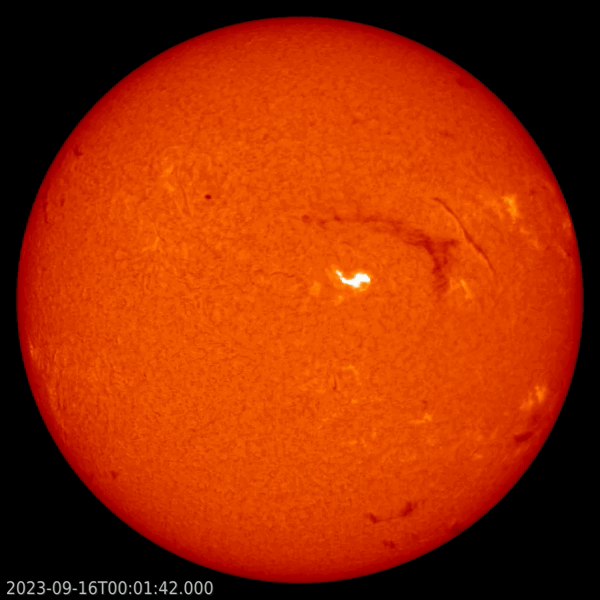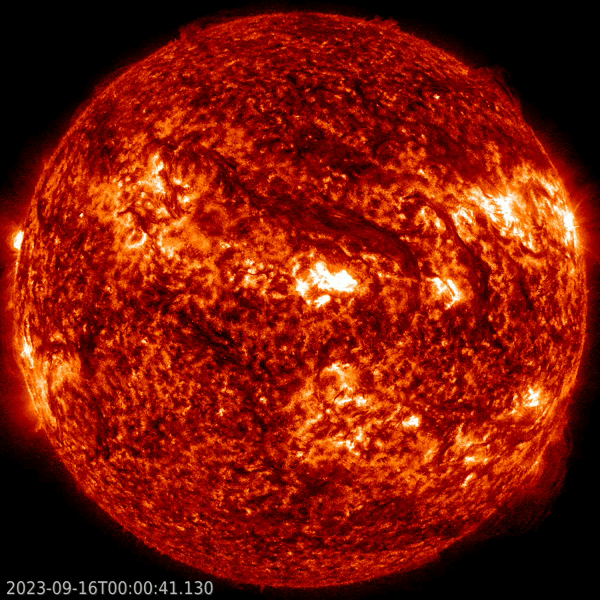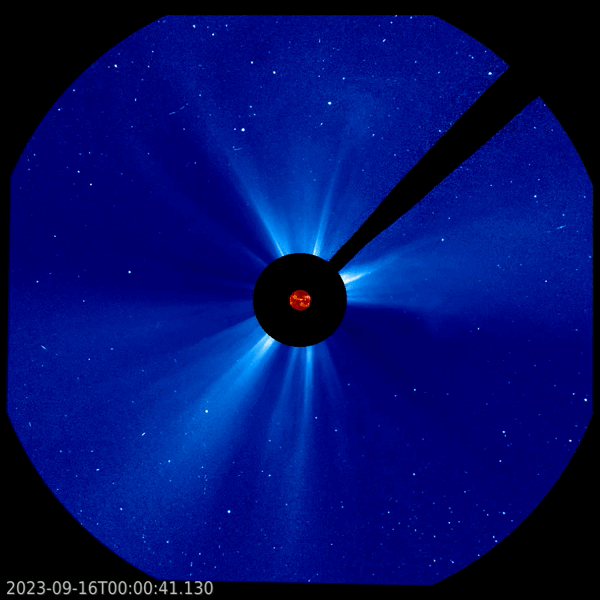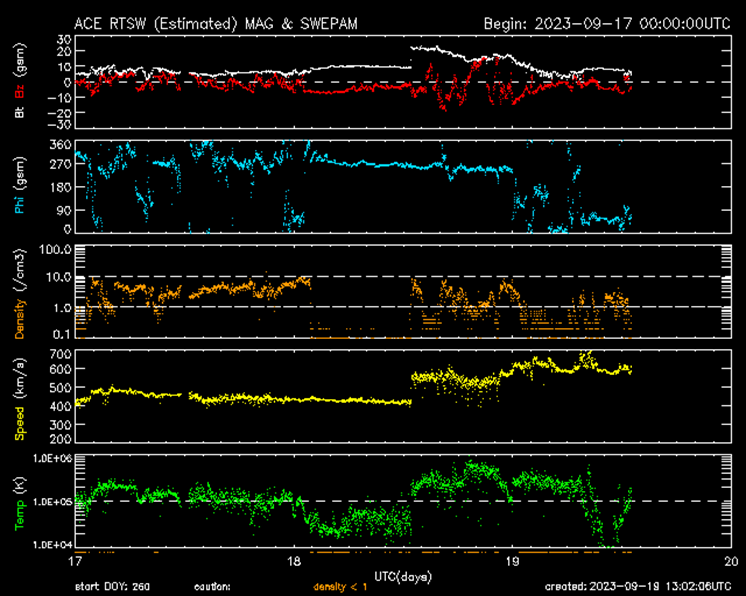Solar filaments are clouds of charged particles ("plasma") above the solar surface squeezed between magnetic regions of opposite polarity. Being cooler and denser than the plasma underneath and their surroundings, they appear as dark lines when seen on the solar disk and as bright blobs when seen near the solar limb (then they are called "prominences"). Special filters are required to observe these features, and one such a filter is the Hydrogen-alpha (H-alpha) line in the red part of the solar spectrum.
Early on 16 September a large filament near active region NOAA 3429 became unstable and erupted. The source of this instability might have been an M2 flare by NOAA 3429 that peaked at 00:50UTC. A stronger flare (M3) in the same sunspot region peaked a few hours later at 05:38UTC, but at that time, the filament eruption was already well going on. It is also possible that the magnetic fields holding the filament became unstable from their own as this concerned indeed quite a long filament. The eruption itself was not associated with an obvious x-ray flare. The H-alpha clip underneath was taken by the groundstations of the NSO/GONG network (https://gong.nso.edu/ ). This snapshot shows the filament eruption in process around the time of the maximum of the M3 flare. Many decades ago, such events were also called "disparition brusque" (sudden disappearance), to highlight the suddenness of the filament's vanishing often after days or weeks with no appreciable change.

SDO AIA 304 imagery reveal the size of the erupting filament, including the evolution of the anchor points, one of which was located in the southern hemisphere near another active region (NOAA 3431). This eruption can be even better followed in the difference images, where one image is subtracted from the next. Note the filament eruption itself was not associated with a significant flare. Ribbons were not obvious in H-alpha images, but AIA 304 images show some ribbons in particular for the northern half of the eruption and to a much smaller extent near the outer end of the southern half. These ribbons are located fairly symmetrically (parallel) along the magnetic inversion line ("neutral line") and result from coronal material raining down into the much denser chromosphere. The images underneath show the eruption in AIA 304 (left) and the difference images (right).
 |
 |
Finally, a coronal mass ejection (CME) was associated with this eruption. Coronagraphic imagery by SOHO/LASCO C2 revealed a partial halo CME with rather slow speed around 400 km/s starting at 09:12UTC (CACTus). Underneath is a compilation of AIA 304 and LASCO C3 images. An impact was expected on 19 September, with a moderate geomagnetic storm possible.

As it turns out, the interplanetary CME arrived at the earth environment over a day sooner than expected, with a strong shock in the solar wind parameters (DSCOVR) observed on 18 September at 12:57 UTC. The magnetic field jumped from 9 to 22 nT, and the solar wind speed from 420 to 550 km/s (SIDC PRESTO). The graphs underneath are from the ACE satellite, showing for the period 17-19 September the total intensity of the interplanetary magnetic field and that of the north-south component Bz (resp. white and red), the direction of the horizontal component (i.e. towards or away from the Sun ; blue), the solar wind density (orange), speed (yellow) and temperature (green). Strong (major) geomagnetic storming levels were observed during the 03-06UTC interval (Kp) on 19 September. The Dst index (Kyoto WDC) only decreased to a modest -82 nT, which correpsonds to a moderate storm as outlined in the STCE's SWx classification page. The local K-index for Belgium (K_BEL) reached only minor geomagnetic storm levels.
A few space weather effects were recorded. Aurora were photographed in France, but in general their visibility remained restricted to the usual locations such as Scotland, Scandinavia, and along the Canada-United States border. The launch of an Electron rocket apparently got delayed by 20 minutes due to the adverse geomagnetic conditions (SpaceNews - https://spacenews.com/electron-fails-during-capella-space-launch/ ). A number of advisories were issued (https://pecasus.eu/ ) for the benefit of the civil aviation, alerting for a depression of the maximum useable radio frequency (HF range, i.e. 3-30 MHz - see also this STCE newsitem for more info).






